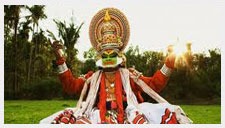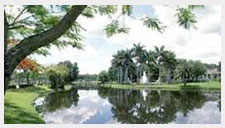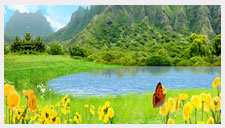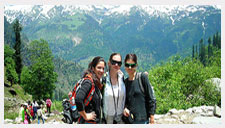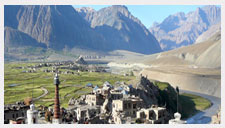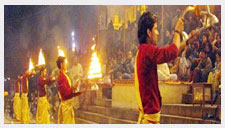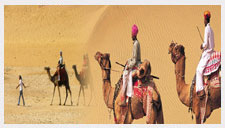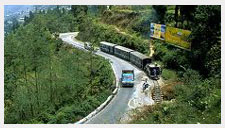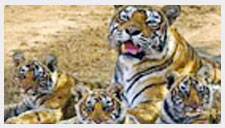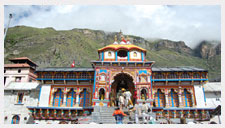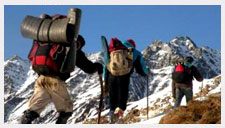Romantic & lovely destination places in Himachal Pradesh
Dalhousie
Dalhousie (2036 m) is a hill station full of colonial charm that holds lingering echoes of the Raj. Spread out over the five hills (Kathlog, Potreys, Tehra, Bakrota and Balun) the town is named after the 19th century British Governer General Lord Dalhousie. It was popular with the British Army personnel in 1860's. The town’s varying altitude shades it with a variety of vegetation that includes stately grooves of pines, deodars, oaks and flowering rhododendrowns. Rich in colonial architecture, the town preserves some beautiful churches. St. John church is the oldest one built in 1863, St. Francis was built in 1894, St. Andrew in 1903 and St. Patric in 1909.
Chail
Located at a height of 2250 metres Chail is one of the smallest Himalayan hill resorts. When Bhupinder Singh, Maharaja of Patiala, was expelled from Shimla, he decided to create his own summer capital, which was Chail. Lying just 45 kms away from Shimla, surrounded by a thick cover of deodars and situated at a higher altitude, Chail was a perfect choice in the British-controlled Shimla. Chail is a resort in the real sense of the term. Rajgarh palace with it's elaborate furnishings, comfortable log huts and cottages, dense forests, and serene walks, sprawling lawns, a childrens park, a lover's hill and sport facilities make chail worth a visit. It also provides good, opportunities for fishing and trekking and boasts of the world's highest cricket pitch and polo ground.
Dharmashala
Set against the backdrop of the dramatic Dhauladhar mountains, Dharamsala is perched on the high slopes in the upper reaches of Kangra Valley. The town is divided into two distinct and widely separated sections, Upper and Lower Dharamsala, which differ almost a thousand metres in height. Today, Dharamsala has become the synonymous to the Tibetan government in exile and the home of Tibetan leader Dalai Lama. Even if the Tibetan community dominates the town, still it has retained the colonial lifestyle and British fervour. Dharamsala over looks the plains and is surrounded by dense pine trees and Deodar forests. A nearby snowline with numerous streams and cool healthy atmosphere makes the surroundings very attractive. Dharamsala is a busy bazaar town and has established itself as the travellers base camp, who come to explore the nearby mountains. The Kotwali Bazaar provides the entire colour and characteristic of a small town, which is mixed with the simple life style. The colourful temple and Gompas, which reflect the culture of Tibet, adds attraction for the visitor. The Kangra museum gives an overview of the rich past of the region and on the other hand there are institutes that have been established to preserve the Tibetan art, cultures and traditions.
Kasauli
Kasauli is one of the small towns developed by the British during the 'hey day' of the empire, and reached by a branch road from the Kalka-Shimla road. The quite beautiful hill-station of Kasauli has a Pastur Institute that produces the anti-rabies vaccine against mad dog-bite and, at the same time, treats victims who have fallen prey to the dead disease, Hydrophobia. The institute in Kasauli set up in 1900, is the oldest in India, taking care of pet, police and army dogs as well as their masters.
Kullu
Kullu was once known as Kulanthpitha, which means the end of the habitable world. Beyond rose the forbidding heights of the Greater Himalayas, and by the banks of the shining river Beas, lay the fabled 'Silver Valley'. Here is the core of an intricate web of numerous valleys - each of which is a visual delight and seems more beautiful than the other. The mountain scapes remain spectacular whether in brilliant sunshine or in the haze of the mist. The 'Silver Valley' has nature's treasures that lie carelessly scattered as flowers on the high meadows. The town of Kullu has long been a centre of faith. In the 17th century, Raja Jagat Singh installed here an idol of Lord Raghunathji, which he brought from Ayodhya. As a mark of his penance, he placed the idol on his throne and it became the presiding deity of the valley.
Manali
The Kullu valley has an ancient town in its lap called Manali. Surrounded by towering peaks at an arm length, Manali's major asset is its proximity to the snowline. It is a flourishing orchard industry, a popular honeymoon destination and trailhead for numerous treks as well as a great countryside ideal for adventure sport lovers. Manali literally means the 'Home of Manu'. Manu is the mythological character who is supposed to have survived when the world was drowned in Flood. He then came to Manali and recreated human life. Thus, the area of Manali is sacred and Hindus treat the temples over here as pilgrimage. and present time we are organizing holiday package in manali, Delhi- manali - Delhi tour With Volvo
Mandi
Built along the Beas river is the historic town of Mandi, the gateway to the Kullu valley. Literally meaning market, Mandi was on the salt route to Tibet. This place offers better option to break journey to the Kullu valley. A district headquarter, Mandi is also renowned for its 81 old stone temples with exquisite carvings, thereby earning it the title of 'Varanasi of the Hills'. The town also has some remains of old palaces and notable examples of the 'colonial' architecture.
Palampur
Palampur is the tea capital of northwest India. Set on the rising slopes of Kangra Valley before they merge with the Dhauladhar ranges. But tea is just one aspect that makes Palampur a special resort. Abundance of water and proximity to the mountains has endowed it with mild climate. The town has derived its name from the local word "pulum', meaning lots of water. Palampur was a part of the local Sikh kingdom and later on came under the British rule.
Solan
Solan is well known for its brewery 4.8 km from town started in 1835 with Anglo-German co-operation, and known as Dyer-Meakin Brewery, producing excellent larger beer and quality whisky. In 1950, it was taken over by the late Major Mohan, renamed Mohan-Meakin Breweries in 1966. Chir pine clothes the Shimla Hills, which yields resin and timber, while apricots and walnuts grow all over the hills, maize and paddy are the two leading grains. Vegetables and Shimla variety of green chillies are extensively grown in the Shimla Hills. The area surrounding Solan in very rich in peas, tomatoes, ginger and beans.










